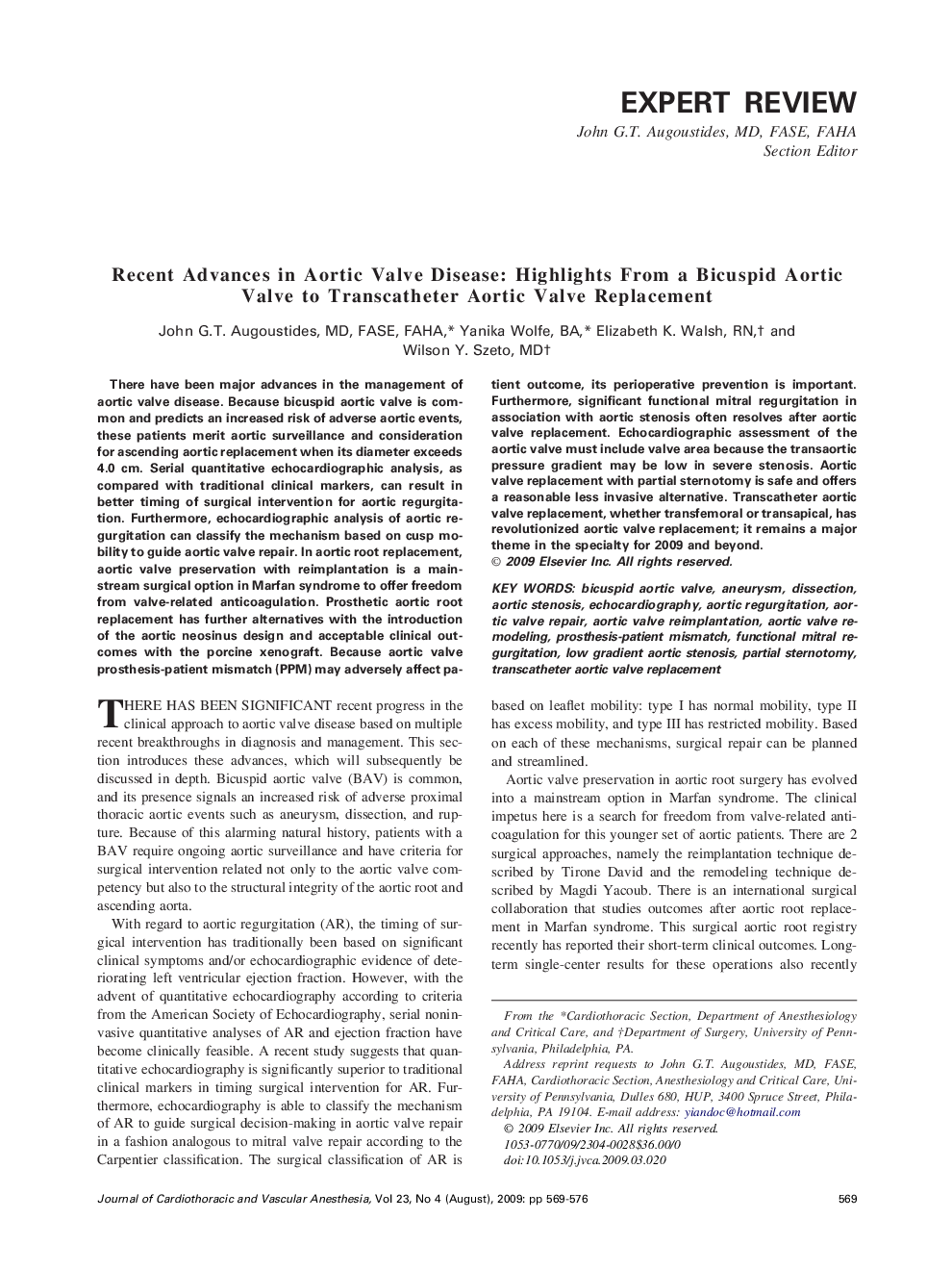| Article ID | Journal | Published Year | Pages | File Type |
|---|---|---|---|---|
| 2761879 | Journal of Cardiothoracic and Vascular Anesthesia | 2009 | 8 Pages |
There have been major advances in the management of aortic valve disease. Because bicuspid aortic valve is common and predicts an increased risk of adverse aortic events, these patients merit aortic surveillance and consideration for ascending aortic replacement when its diameter exceeds 4.0 cm. Serial quantitative echocardiographic analysis, as compared with traditional clinical markers, can result in better timing of surgical intervention for aortic regurgitation. Furthermore, echocardiographic analysis of aortic regurgitation can classify the mechanism based on cusp mobility to guide aortic valve repair. In aortic root replacement, aortic valve preservation with reimplantation is a mainstream surgical option in Marfan syndrome to offer freedom from valve-related anticoagulation. Prosthetic aortic root replacement has further alternatives with the introduction of the aortic neosinus design and acceptable clinical outcomes with the porcine xenograft. Because aortic valve prosthesis-patient mismatch (PPM) may adversely affect patient outcome, its perioperative prevention is important. Furthermore, significant functional mitral regurgitation in association with aortic stenosis often resolves after aortic valve replacement. Echocardiographic assessment of the aortic valve must include valve area because the transaortic pressure gradient may be low in severe stenosis. Aortic valve replacement with partial sternotomy is safe and offers a reasonable less invasive alternative. Transcatheter aortic valve replacement, whether transfemoral or transapical, has revolutionized aortic valve replacement; it remains a major theme in the specialty for 2009 and beyond.
